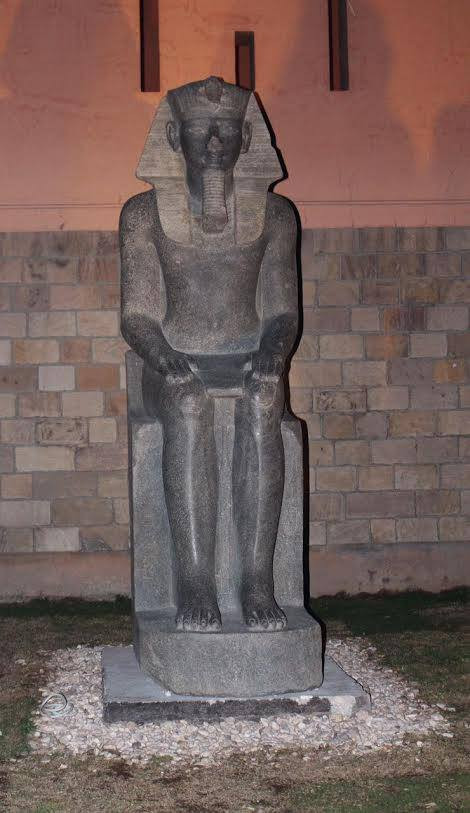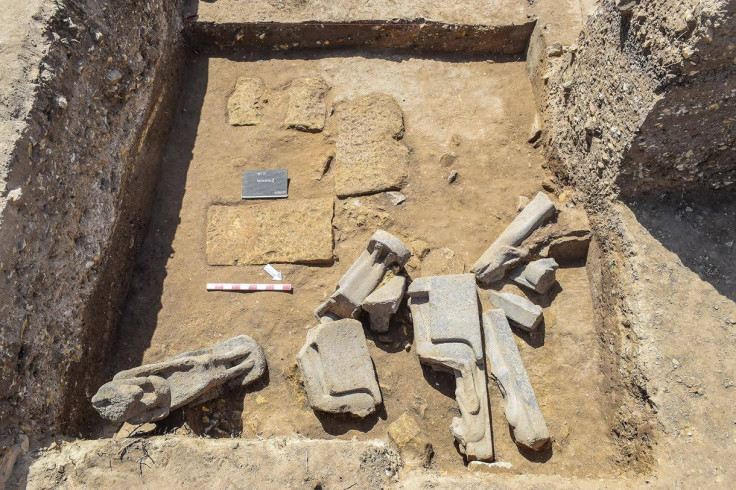Stunning statue of Egyptian pharaoh Amenhotep III unearthed in ancient mortuary temple
Archaeologists have also found pieces of statues representing goddess Sekhmet.
Archaeologists with the Colossi of Memnon and Amenhotep III Temple Conservation Project have unearthed a stunning black granite statue representing Egyptian pharaoh Amenhotep III seating on a throne. It was discovered in the great court of the temple, located on the west bank of the city of Luxor.
The mortuary temple of Amenhotep III was erected between 1390 and 1353 BC to honour the New Kingdom pharaoh even after his death.
It was a massive structure of architectural prowess measuring 100 metres wide by 600 metres in length. It would have contained many statues like the one that has just been found, representing the king, but also gods and sphinxes.
However, the temple complex was built too close to the Nile. Repeated flooding caused a lot of destruction and an earthquake in 27 B.C. and pillaging of stone and statuary for reuse in other structures completed the damage.
By the end of the 20<sup>th century, only one thing from the original structure remained intact – the Colossi of Memnon, two huge statues weighing around 720 tons and seated on thrones.
Since 2000, the Colossi of Memnon and Amenhotep III Temple Conservation Project has been working to identify parts of the temple that survive behind the Colossi of Menmon – it is clear that many interesting artefacts survive despite deterioration to the complex over the years.
The black-granite statue just found by the team is similar to another one they had discovered previously in 2009, and which is now on display at the Luxor Museum of Ancient Egyptian Art.

However, this particular one is thought to have been commissioned early in the reign of Amenhotep III, because it displays a very juvenile face. It measures 248 cm high, 61 cm wide and 110 cm deep. Project director Hourig Sourouzian told Ahram Online: "It is a masterpiece of ancient Egyptian sculpture: extremely well carved and perfectly polished".
Statues of Sekhmet
Before this discovery, the 2017 archaeological season has already yielded a number of interesting finds, including 66 fragments of statues representing the Egyptian goddess lion Sekhmet.

In ancient Egyptian religion, Sekhmet was the goddess of war and the destroyer of the enemies of the sun god Re. She was associated both with disease and with healing and medicine. It is probable that Amenhotep III commissioned hundreds of statues of the goddess to protect himself from diseases and from the "evil eye".
For one of the statues recovered at the mortuary temple, the full lion head was preserved, while the archaeologists also found the busts of many others. The goal is now to restore these statues and put them back in their original positions as soon as possible.
© Copyright IBTimes 2025. All rights reserved.






















